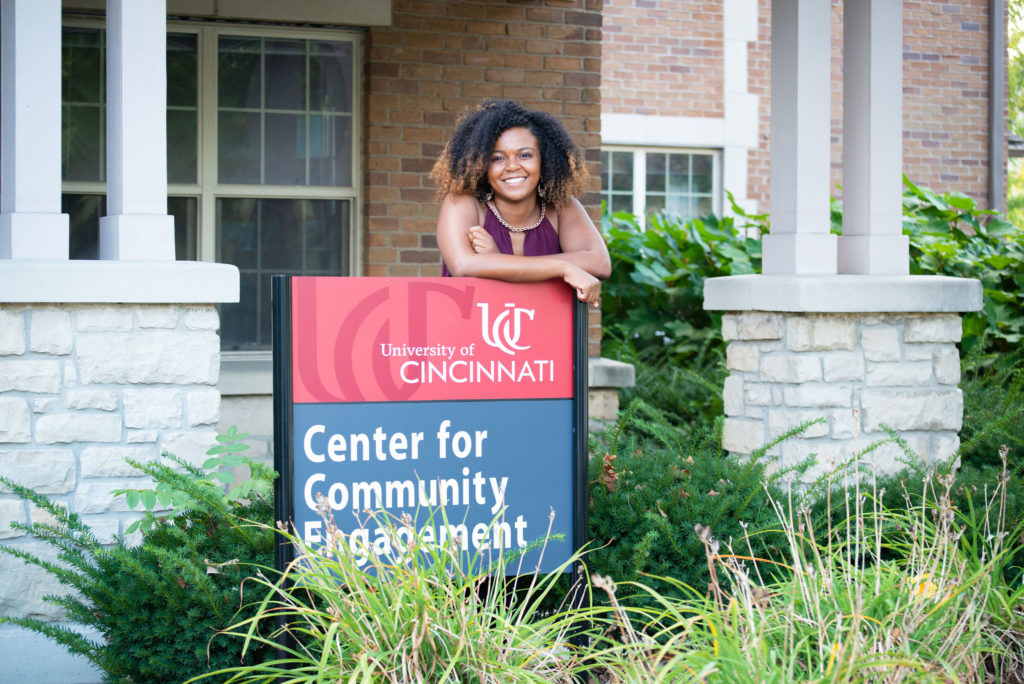
Thriving Campuses helps stakeholders advance a vision for thriving on their campuses and see their role as stewards of a set of vital campus conditions.
This guide offers a starting point for campus stakeholders looking to advance equitable well-being by connecting users with a host of resources and tools for learning and stewarding a culture of caring and belonging.
It is our hope that Thriving Campuses inspires fresh thinking, bold ideas, and collective action by learning and working together as stewards.

Thriving Campuses: A Campus Guide for Well-Being and Equity
This guide offers campus stakeholders a way to reimagine campus systems, life, and culture—and discover opportunities for shared stewardship.
Thriving Campuses Guide
Introduction
Students at colleges and universities across the United States increasingly face formidable strains on their mental, physical, and social health, often compounded by food, housing, and financial insecurity. Two- and four-year colleges and universities are seeking solutions to these complex, interrelated challenges, and many of these same institutions are confronting uncertain financial futures, along with dwindling public support and questions about the primary purpose and value of post-secondary education. All of this was in motion well before 2020, when a global pandemic, a major economic decline, and widespread demand for addressing racial injustice upended the status quo.
Against this backdrop, campus administrators, students, faculty, and staff are actively searching for new and better approaches to advance collective and equitable well-being. This guide offers campus stakeholders a way to reimagine campus systems, life, and culture—and discover opportunities for shared stewardship.
We must move from an old-fashioned, schoolhouse-bound model of child development and education to a system of robust, flexible learning opportunities coupled with basic supports available from birth through adulthood.
Education Redesign Lab, Harvard Graduate School of Education
Springboard for Thriving Together (2020)
How to Use This Guide
Thriving Campuses is organized into three sections that contextualize
the Thriving Together model for campuses:
Vital Campus Conditions shape our opportunities for individual and collective thriving. These interdependent and mutually reinforcing vital conditions support 1) Basic Needs Security; 2) Physical Vitality; 3) Mental and Emotional Well-Being; 4) Transformational Learning; and 5) Culture of Caring and Belonging.
Higher education has its share of legacies that have inflicted generational harm. This historic moment offers today’s campus leaders an extraordinary opportunity to create new legacies for inclusion, well-being, and justice—starting on their own campus.
Stewards of well-being and justice are people in organizations and communities who share responsibility for working across differences to expand the vital conditions all people and places need to thrive. Students, administrators, faculty, and staff can all play a stewardship role from their respective positions of influence.
Thriving Campuses also lifts up three cross-cutting themes.
- COVID-19 Response and Renewal: This guide offers information about the impact of COVID-19 on campus vital conditions, and offers resources in support of campuses navigating the COVID-19 landscape.
- Shared Stewardship: In support of shared stewardship, this guide highlights several key resources, best practices from the field, and tools for advancing shared stewardship across vital campus conditions.
- Advancing Equity: Equity considerations are integrated throughout the guide, including across all vital campus conditions. Crucially, the guide unpacks campus legacies of discrimination and exclusion, and centers equity in shared stewardship.
Resources highlighted in this guide and many others for campus stewards can be found in the Thriving Campuses Library on Community Commons.
Vital Campus Conditions

Vital Campus Conditions shape our opportunities for individual and collective thriving. These interdependent and mutually reinforcing vital conditions support 1) Basic Needs Security; 2) Physical Vitality; 3) Mental and Emotional Well-Being; 4) Transformational Learning; and 5) Culture of Caring and Belonging.
Together, the dimensions provide a comprehensive lens through which to understand well-being and envision possibilities to lead together to improve it.
Vital campus conditions are properties of places and institutions that we all need all the time to reach our full potential. They function as an interconnected whole and together, provide a comprehensive lens through which to understand well-being and envision possibilities to lead together to improve it.
When campus stakeholders work together to expand vital campus conditions, we create a culture of well-being and equity where students, faculty, and staff can thrive.

Basic Needs Security
A culture of well-being where basic needs are met means that students, faculty, and staff have:
- Safe, humane places to sleep every night
- Nutritious meals every day
- Access to primary, urgent, and emergency healthcare
- Enough money to pay for tuition and necessities, without life compromising debt
- Easy access to emergency aid
- Childcare and support services for parenting students
Basic Needs Security is about the most practical requirements for survival. Food, housing, financial security, and access to healthcare are necessary for life and learning.
Students across the country increasingly struggle to meet their basic needs. The COVID-19 pandemic has exacerbated basic needs insecurity straining personal finances, creating challenging housing situations, and creating new healthcare needs for campus community members.

Nearly 3 in 5 students experience basic needs insecurity
Some of the highest rates of housing and food insecurity are at tribal colleges and universities, and among Hispanic or Latinx students, Black and Indigenous students, non-binary and transgender students, students with children, former foster youth, students who previously served in the military, and returning citizen students.
Students who experience basic needs insecurity often work more hours, report lower grades, and are less likely to graduate, all of which furthers equity gaps. Disparities also exist in borrowing money for tuition that result in higher levels of student debt and more frequent delinquencies, especially among Black and Hispanic students, reinforcing the racial wealth gap.
An equity-driven approach will reduce housing, food, and financial insecurity among students, while also improving educational outcomes and student debt burden. At many institutions, supports for students exist, yet most students who experience basic needs insecurity do not access them. Improving access, outreach, and eligibility to resources that address basic needs insecurity is critical. Specific opportunities include:
- Assessing the landscape of supports, barriers to access, and gaps in eligibility;
- Centralizing, simplifying, and destigmatizing student access to SNAP, housing vouchers, and other public benefits;
- Supporting efforts to expand SNAP access for students; and
- Addressing root causes of student debt.

Physical Vitality
A culture of physical vitality are met means that students, faculty, and staff have:
- Freedom from physical violence, sexual violence, and gun violence
- Access to healthy and affordable food
- Convenient spaces and activities for being physically active
- A transportation system that promotes physical activity
- A tobacco-free environment
- A culture that supports adequate sleep
PROTECTING THE PHYSICAL HEALTH OF STUDENTS, FACULTY AND STAFF HAS BEEN OF UTMOST CONCERN SINCE THE ONSET OF COVID-19, especially those with compromised immune systems and with regard to residential campus communities. As institutions resume campus operations, they are instituting a set of practices and policies to keep their communities safe and healthy. These include social distancing, COVID-19 testing, vaccination centers, contact tracing, and quarantine policies and practices.
Campuses play a significant role, broadly, in promoting physical health, safety, and vitality by providing opportunities for physical activity, supplying healthy foods across campus dining, extending access to preventive health services, and ensuring safety.

Only 16% of women and 18% of transgender students feel very safe on their campus at night
For many, college is an important time in life when good health behaviors are learned. For college students, some of the most pressing health priorities include promoting sexual health, preventing alcohol, tobacco, and substance use, preventing physical and sexual violence, and promoting adequate sleep. Good physical health is linked to academic success and is an essential component of overall well-being.
Disparities in alcohol and substance use, sexual health, and experiences of safety and violence exist by gender, sex, race, and disability.
- Female students are more likely to experience sexual assault, violence, and abuse, and are less likely to feel safe on campus.
- LGBTQ+ students experience higher rates of being verbally threatened, disproportionate rates of intimate partner violence, higher rates of smoking, and lower rates of physical activity and condom use.
- Students with disabilities are more likely to engage in substance use and sexual risk behaviors.
- Black males attending predominantly white institutions report higher levels of alcohol consumption and mental health problems.
- Students with military experience report disparities in consequence of alcohol use.
- Tobacco use prevention is especially critical for students from low income communities and communities of color, which are disproportionately targeted by tobacco advertising.
An equity-driven approach to improve physical vitality will help prevent alcohol and substance misuse, increase safety, prevent violence, and reduce sexual risk behaviors, especially in groups experiencing disparities. Specific opportunities include:
- Working with campus centers and student organizations that engage LGBTQ+ students, women, students with disabilities, students of color, and students with military experience to address leading health equity issues
- Tailoring health promotion programming and services to communities for whom equity gaps exist
- Implementing a comprehensive, campus-based sexual violence prevention strategy that is tailored to institution-type and different communities within it
- Providing welcoming facilities and programs for physical activity for all genders and abilities

Mental + Emotional Well-Being
A culture of well-being where mental and emotional health needs are met means that students, faculty, and staff have:
- Freedom from stigma
- A safe environment to talk about mental health challenges
- A culture that promotes conditions for good mental health
- Programs and services that effectively address depression and anxiety, and prevent suicide
- Access to prevention and treatment services for substance misuse disorders and other behavioral health problems
- Strategies and programs that grow individuals’ resilience to face life’s ups and downs
SINCE THE ONSET OF COVID-19, COLLEGE STUDENTS ACROSS THE U.S. HAVE GRAPPLED WITH MASSIVE DISRUPTIONS to their education and, as a result, a nationwide decline in student mental health. The pandemic and its impacts have led to many students feeling that planning their future is impossible. The majority of Gen Z adults in college reported that their education (87%) and uncertainty about how the school year would be (82%) were significant sources of stress. Students and instructors alike faced barriers such as quiet spaces to work, childcare, and reliable access to the internet and technological devices. Other top concerns include anxiety about the lack of productivity, finances, and future job offers.

4 in 5 students experience moderate or high stress
In addition to educational stressors, many students have struggled with loneliness and isolation. They experience declining mental well-being, with increased stress, anxiety, depression, and loneliness related to the threat of COVID-19 and changes in daily life.
Impacts have been most severe for BIPOC and LGBTQ+ students. While ensuring accessible, evidence-based treatment is essential to supporting students, faculty, and staff in crisis, investments in prevention and resiliency will reduce the need for urgent services. Creating an institutional culture that prioritizes conditions for well-being, such as work/life balance, sense of purpose, safety, and social support and inclusion will lead to thriving.
An equity-driven approach addresses stigma and root causes of stress and mental health problems, such as campus and social climate. It also improves access to mental health services at all levels of intensity, and reduces access to means of suicide, with tailored strategies that respond to the varied needs of groups experiencing inequities. Specific opportunities include:
- Initiating stress intervention programs that respond to different stressors experienced by students, including race and school racial composition
- Addressing real and perceived barriers to mental health services, especially for students of color
- Providing mental health services and prevention programs designed to meet the needs of groups for whom equity gaps exist
- Promoting conditions for a campus culture of diversity, inclusion, and thriving for all
It will also center students for whom equity gaps exist. Female, LGBTQ+, students of color, and students with military experience have a disproportionate burden of mental health outcomes.
- Females report higher rates of stress, depression, anxiety, and PTSD.
- LGBTQ+ students have elevated risk of self-injurious and suicidal behaviors.
- Transgender and gender minority students have a higher prevalence of symptoms across multiple mental health measures, including depression, anxiety, eating disorders, self-injury, and suicidality.
- Students with military experience report high rates of self-harm.
- Among students of color, racism, cultural conflict, and lack academic and social support, may increase their vulnerability to mental health disorders.

Transformational Learning
A culture of well-being that fosters transformational learning is one with:
- Inclusive, student-centered pedagogy and engaging classroom experiences
- A supportive and welcoming learning environment with space for diverse perspectives that foster intellectual growth
- Meaningful connections with faculty mentors and peers
- Community-based teaching, learning, research, and co-curricular activities that enhance students’ problem solving skills and sense of purpose
- Intentional connections between campus experiences and life after graduation
EDUCATIONAL EXPERIENCES CAN BE TRANSFORMATIVE FOR WELL-BEING by nurturing intellectual growth, cultivating a sense of purpose, and growing belonging, efficacy, and resilience. Meaningful educational experiences occur inside and outside of the classroom (or virtual classroom as it may be), with faculty mentors, and through peer-to-peer learning. Inclusive pedagogy—a student-centered approach to teaching that creates a supportive and welcoming learning environment for students of all backgrounds and invites a diversity of perspectives—is core to how educational experiences foster well-being. Through engaging, inclusive, meaningful educational experiences, institutions of higher learning can engender individual well-being and shape the next generation of civically-engaged leaders.

High-Impact Education Practices increase rates of student retention and student engagement through relationship building and meaning-making.
Education is a powerful lever of societal change, an engine of economic mobility, and a force for growth and development of the whole person. Yet, the potential for these benefits is unrealized. Implicit bias in the classroom, lack of multiculturalism and diversity across curricula, and the erosion of liberal education deprive students of transformative educational experiences that foster belonging, efficacy, and resilience, and inspire them to lead change in an inequitable society.
An equity-driven approach recognizes and leverages the power of education to challenge and expose students to a diversity of perspectives, connect students to pressing societal issues, catalyze moral imagination, and promote engaged citizenship, cultural empathy, pluralism, and civic democracy. Specific opportunities include:
- Identifying implicit bias in the classroom and unlearning implicit associations
- Empowering educators to facilitate more effective learning experiences and conversations about race and cultivate racial literacy
- Decolonizing curricula and revising courses and programs to introduce multicultural thought, be intellectually inclusive, and integrate diverse and inclusive subject matter
- Redressing funding metrics, course scheduling, and underlying barriers to holistic curricula and inclusive pedagogy

Culture of Caring and Belonging
A campus culture of well-being that fosters a culture of caring and belonging that has:
- A campus community that recruits and welcomes diverse life experiences and backgrounds
- Intentional community-building activities
- Faculty, staff, and student leaders that have skills to proactively address racism and othering
- A welcoming environment that engenders a sense of belonging
A CAMPUS CULTURE OF CARING AND BELONGING IS ROOTED IN PRINCIPLES OF SOCIAL INCLUSION AND SUPPORT AND RACIAL HEALING. A culture of caring and belonging seeks for all students, staff, and faculty to experience inclusive and welcoming environments. Belonging is both necessary for community members to achieve a sense of well-being and foundational for advancing campus vital conditions. The more stakeholders feel like they belong and have a sense of shared identity, the more they engage in shaping the conditions of their campuses.

Only half of students say that their campus is a place where people look out for each other
Cultivating welcoming and inclusive campus climates for students of all backgrounds is critical to addressing equity gaps. Personal and structural forms of racism, homophobia and other forms of discrimination are at the heart of campus climate issues. In recent years, incidents related to race on campuses have centered on issues of diversity, inclusion, and freedom of expression, creating urgency to address underlying issues.
An equity-driven approach acknowledges the existence and impacts of discrimination, bigotry, and racism on campus, and seeks to unmake institutional systems that give rise and perpetuate oppression and inequity. Specific opportunities include:
- Condemning racism and discrimination at the highest levels of the administration, and making transparent efforts to redesign systems for equity
- Promoting a diverse student composition: institutions with higher proportions of students of color and minority-serving institutions report fewer incidents of stereotyping and discrimination, less tokenism, and higher levels of inclusion, friendship, and love
- Increasing recruitment, retention, and advancement of faculty from underrepresented groups
- Designing inclusive, student-centered pedagogies
- Advancing advocacy and dialogue by student organizations that fight against a “culture of silence” where those who are oppressed become powerless to speak to their oppression
Campus Legacies

Higher education has its share of legacies that have inflicted generational harm: systematically excluding communities of color, and using land taken from indigenous peoples to fund Land Grant Universities. Higher education institutions have also led the way for women’s and civil rights, as well as for many of the social and technological innovations we enjoy today.
This historic moment offers today’s campus leaders an extraordinary opportunity to create new legacies for inclusion, well-being, and justice—starting on their own campus.
Exploring Legacies: Looking Back and Forward
WE HAVE INHERITED LEGACIES THAT CONFER DIGNITY AND FOSTER RESILIENCE, AND WE HAVE LEGACIES THAT DEHUMANIZE, EXCLUDE AND INFLICT TRAUMA (particularly on people of color). Higher education has its share of legacies that have inflicted generational harm, like systematic racism on educational achievement and economic mobility, and legacies worth celebrating, like student activism in the civil rights movement.
To change course toward the goal of thriving people and places, we must first step back and see the system that shapes our ability to move in a new direction. It is a system designed long ago, with ever-present effects that can support or diminish thriving. We call these “legacies.” Some must be celebrated and sustained, while others are rooted in unjust, unwise, unsustainable, or racist ideas that are manifestly harmful. Those legacies, which greatly hinder our ability to thrive, can’t be erased. But they can be reckoned with and replaced. Not in some distant future but now.
Advancing Equity: Co-Creating New Legacies
EQUITABLE WELL-BEING PROVIDES A UNIFYING FRAME FOR HIGHER EDUCATION AND CAMPUS LIFE: to advance individual well-being and life opportunities of students, faculty, and staff by expanding campus vital conditions for collective well being.
Populations of Focus
Thriving students, faculty and staff, on thriving campuses—no exceptions—is our North Star. This means focusing on populations for whom equity gaps exist. These groups include: first generation college students, students of color, transgender students, parenting students, students with disabilities, student service members, veterans and returning citizens. Disparities among these groups and other equity considerations are described for each vital campus condition.
Equitable Conditions, Outcomes, and Processes
Advancing equity on campus involves creating equitable conditions, advancing equitable outcomes, and co-designing equitable processes. These three aims can help institutions of higher education strategize for equity.
- Create equitable conditions with investments, policies and programs that expand access to higher education, ensure equitable and fair admissions processes, and increase affordability and representation.
- Advance equitable outcomes through measures and actions that create conditions for all to thrive, and eliminate disparities in educational and well-being outcomes across the vital conditions.
- Co-design equitable processes with students, faculty, and staff that increase dialogue, listening, engagement, inclusion, and shared decision-making.
Campus Stewardship

Stewards of campus well-being are students, faculty, staff and other stakeholders who share responsibility for working across differences co-create new legacies of dignity and inclusion and expand vital campus conditions for all to thrive.
Stewardship is a shared endeavor with intentional practices, such as building trusted relationships through dialogue; surfacing and shaping new narratives; using catalytic measures; and identifying multi-solving strategies. It calls upon us to foster authentic engagement across campus stakeholders, and realize the potential for different departments and disciplines to work together to improve equitable well-being.
Advancing Dialogue: Growing Belonging and Connection
DIALOGUE STRENGTHENS OUR SENSE OF BELONGING AND CONNECTION BY BUILDING RELATIONSHIPS. When we listen, share, and discover, we are able to create meaning together—and are better positioned to take action on our campus.
No matter the topic, dialogue partners need to enter the conversation with intention by:
- Listening for what’s true for others
- Sharing what’s true for you
- Discovering what we share in common
Dialogues can be in groups of two to eight, with friends, colleagues, acquaintances, or strangers. In campus settings, it is particularly helpful to bring together students, staff, and faculty to share perspectives on well-being and the vital conditions for a healthy, equitable campus community
Through dialogue we can imagine a future together where all people are thriving, and we all play a role in building a community that is genuinely welcoming and comfortable.
Using Dialogue to Grow Campus Well-Being
Advancing Measurement: Assessing Well-Being
CAMPUS STEWARDS CAN LEARN “WHO’S THRIVING AND ISN’T” BY USING MEASURES OF WELL-BEING that capture and value how students, faculty, and staff think and feel about their own lives in a holistic, equitable way.
The Thriving Together: Springboard recommends using Cantril’s Self-Anchoring Scale, a two-item measure of evaluative well-being that assesses current life evaluation, future life optimism, and overall life evaluation, categorized into thriving, struggling, and suffering. This measure is well-validated and is used to measure and track population well-being around the world, at the national level and at state and local levels in the U.S. It has also been used at institutions of higher learning such as Yale University. Disaggregating by race, ethnicity, and gender, as well as other factors like first-generation, international, and parenting student status shows us disparities across key groups and where to focus our efforts.
Campus stewards should also measure other important dimensions of well-being, including perceived overall health, financial security, social connectedness, and sense of meaning and purpose. Many campuses participate in surveying efforts like the American College Health Assessment, Healthy Minds Study, Hope Center, and Well Being Index which can help us better understand our campus vital conditions. Other administrative, facility, and even de-identified student data can also be leveraged.
Rather than solely tracking individual health outcomes, a holistic approach that measures well-being provides a north star—one which diverse groups can rally around together.
The Science of Thriving Together
Field Lessons in Shared Stewardship
These lessons highlight ways stewards are working together to create thriving people and places on their campuses:



Use story and data to drive action: Data and story work together to deepen understanding, and point to priorities and potential solutions. Gathering stories can lift up under-represented voices, and pairing stories with data that speak to senior leaders helps make the case for change.
Launch high visibility efforts:
High visibility efforts—like events, demonstration projects, new initiatives, and campaigns—signal to campus stakeholders that well-being is a priority. Use high visibility efforts to create opportunities that build community, norm a well-being narrative, and bring new stakeholders to the table.
Co-create the agenda with students: Students are the fabric of campus life. They know the issues and are close to the solutions. Co-create a wellbeing agenda with students, and engage them in deep, meaningful work and authentic leadership roles.
Find allies and expand networks: There are natural allies in well-being work across campus stakeholders—embedded in student government, student affairs, faculty groups, operations, and libraries. Find these allies and tap into their existing networks to build support and strengthen leadership structures.



Cultivate caring leadership:
An important part of the culture shift for wellbeing is building a culture of caring. It signals to students and other campus stakeholders that they matter. Cultivate caring leadership to build a continuum of supports and services that expand campus vital conditions.
Create leadership structures to sustain work: Collective, distributed leadership can combat common challenges to sustaining health and well-being work in the long term. Create leadership structures to sustain work by building a distributed team and encouraging leaders to incorporate well-being work into their portfolios and create change in their spheres of influence.
Find champions: Champions play an important role in lifting up issues, initiating action, mobilizing for action, and relentlessly pursuing action. Champions come in many forms-faculty, students, administrators, major donors. Find champions and leverage their leadership; help them make magic.
Lead for culture shift: The higher up in administration well-being allies and champions sit, the easier shifting campus culture becomes. Lead for culture shift by building connections and cultivating leadership at all levels-from the ground up and from the top down.
Stay Connected
We are continuing to learn and evolve this page–and want our resources to be useful and pragmatic. Tell us what you are learning and what you need. What would help you on your path to a thriving campus?